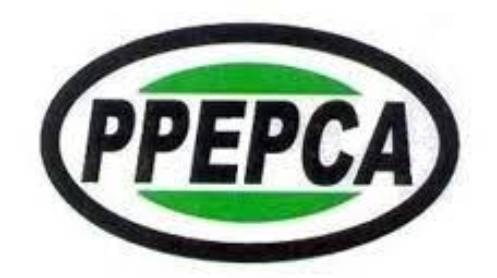The former British colony of Guyana, a nation whose economy was hit hard by the pandemic, has emerged as the world’s hottest offshore drilling location. Since 2015 global energy major ExxonMobil as well as its partners Hess Corporation and CNOOC have made a slew of quality oil discoveries in the offshore Stabroek Block which have delivered resources in excess of 11 billion barrels of oil. This is driving a massive economic boom for Guyana, which was among the poorest nations in Lain America and the Caribbean. According to the IMF, the micro-state’s gross domestic product grew by just under 20% during 2021 and is poised for further strong expansion. The substantial surge in oil prices which sees the international Brent benchmark up by 58% over the last year to be trading for $110 per barrel coupled with the push by big oil to decarbonize its operations are adding considerable momentum to the boom. Guyana’s government is expected to bank over $1 billion in oil revenues during 2022 which according to industry consultancy Rystad Energy will soar to $7.5 billion by the end of the decade. That will deliver a tremendous economic boom which will see Guyana’s economy grow fivefold over that period. Key to this tremendous economic opportunity is the rapid ramping up of crude oil production, with Exxon estimating that its operations will have the capacity to pump 1.2 million barrels per day by 2027, which is further oil discoveries. Exxon and its partners in the 6.6-million-acre Stabroek Block have made over 25 quality discoveries with the crude found being light and sweet with an API of 32 degrees and 0.58% sulfur content. The latest discoveries were at the Seabob and Kiru-Kiru wells in the Stabroek Block to the southeast of the Payara Project. Exxon also announced that production from the Liza oilfield in the Stabroek Block has exceeded the 340,000 barrels per day initially targeted. Earlier this month it was revealed that Exxon had lodged an application with Guyana’s Environmental Protection Agency to drill 35 exploration and appraisal wells in the Stabroek Block. When the energy supermajor’s exploration success in the block is considered along with the five discoveries made in the Stabroek Block earlier this year, the drilling campaign will make additional discoveries boosting the 11 billion barrels already discovered. That crude oil is also economic to extract. Breakeven prices range from $35 per barrel Brent for Liza Phase 1, $25 a barrel for Liza Phase 2, which recently came online, and $32 per barrel for the 220,000-barrel capacity Payara Project, which is scheduled to start production during 2024.
While it is the Exxon-led consortium that is key to driving Guyana’s epic oil boom, which will see the Caribbean country become a leading oil producer, other international energy companies are also engaged in exploration drilling. British driller Tullow Oil, which is the operator of the world-class Jubilee field in offshore Guyana discovered in 2007, announced 37.5% partner Repsol, with TotalEnergies holding the remaining 25%, had spud the Beebei-Potaro well in the Kanuku Block. That wildcat well, which comes on the back of the 2020 Carapa medium oil discovery in the block where 13 feet of net oil pay was identified, is targeting a prospect that Repsol estimates contain around 200 million barrels of crude oil. The Kanuku Block lies below the southeastern tip of the Stabroek Block, where Exxon has made nearly all discoveries in offshore Guyana and is believed to lie on the same petroleum fairway. To the east of the Kanuku Block lies Block 58 offshore Suriname, where TotalEnergies and partner Apache have made five quality light oil discoveries with modelling estimating the block contains 6.5 billion barrels. Those factors, notably the slew of high-quality oil discoveries made by Exxon in the Southeastern tip of the Stabroek Block, bode well for further finds by Repsol and its partners in the Kanuku Block.
Related: U.S. Refiners Haven’t Seen Fuel Demand Destruction
Most of the crude oil found so far, in offshore Guyana, has been medium to light and relatively sweet, meaning it is cheaper and easier to refine into high-quality low contaminant fuels such as gasoline and diesel. That means, particularly in comparison to neighboring Venezuela, Colombia, and Ecuador which all predominantly pump heavy sour crude oil grades, the petroleum being produced in Guyana has a low carbon footprint. Those characteristics are especially important in a world where there are significant global efforts to significantly reduce carbon emissions while ratcheting up pollution restrictions and regulations. Disappointingly for Tullow, its exploration wells in the Orinduik Block, Jethro-1 and Joe-1, found high-sulfur content heavy crude oil, which compared to the light sweet crude being pumped by Exxon from the Stabroek Block is less economically viable.
Guyana is a rapidly growing offshore drilling hotspot, accounting for nearly a fifth of discovered oil and natural gas resources globally and nearly a third of solely oil discoveries. The latest discoveries, made by Exxon and Repsol, coupled with growing light oil production will see Guyana become the third largest oil producer in Latin America after Brazil and then Mexico. That will deliver a tremendous economic windfall for the deeply impoverished South American nation which will grow with Georgetown focused on attracting greater energy investment and building urgently needed industry infrastructure.





